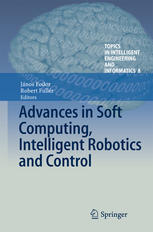|
Purpose of the laboratory is introduction, teaching, research and application of theories, methodologies and systems which represent and integrate leading theory and practice of engineering in consistent systems of twenty-first century model centric engineering informatics. Research and education laboratory provides integrated multidisciplinary environment for virtual engineering. It represents leading industry level information system for lifecycle activities of engineers. Emphases are on requirements, functional, logical and physical (RFLP) structure based product modeling, and representation of active engineering knowledge using applied mathematics and intelligent computing. Laboratory background is provided for the Institute of Applied Mathematics, John von Neumann Faculty of Informatics and the Doctoral School of Applied Mathematics and Applied Informatics at the Óbuda University in the areas of applied mathematics and intelligent informatics. More information. |
|
Laboratory offers courses in PLM related informatics, mathematics, engineering modeling, and systems engineering for students who enrolled in information technology, multidisciplinary engineering, and PhD research programs. Courses are available on BSc, MSc és PhD levels.
Essential outcome of course programs is seeing and thinking in engineering specific virtual information space. Basic outcome is to understand self adaptive generic object modeling which is based on built in active knowledge and high level abstraction. In order to achieve new learning outcomes lectures can be arranged in laboratory with personally available model space at student workstations in case of courses where small group (max. 14)is feasible.
|
|
Research results are shown in the linked publications below! Former topics: Human intent modeling for adaptive product model. Information Content in Product Model.
Current topics: Requested Behavior for the control of product definition. Abstraction based self adaptive object definition. Coordinated request driven product model (CRPM) Knowledge integration in product model. Multilevel Abstraction Based Self Control Method for Industrial PLM Model
Formerly completed research projects in the Hungarian Scientific Research Fund (Hungarian abbreviation: OTKA), (Project leader: László Horváth)
Representation of design intent in product
model and collaborative information exchange, 1998- 2002, OTKA T 026090
|

|
Modeling system and associated virtual technology supports university level education and research in lifecycle management of product information (PLM). Currently, laboratory is based on the Dassault Systémes V6 and V5 PLM installation. Our license is for education and nonprofit research without providing models for outside organization. In case of company ordered and financed modeling, we must ask for research license. Our current V6 PLM includes the discover level. Master and advance level extension is planned mainly for the RFLP structure based product definition. Multilevel Abstraction Based Self Control Method for Industrial PLM Model. More information (coming soon). |
|
Students are welcomed to solve complex tasks in intelligent informatics, applied mathematics, and systems engineering. Advanced 21st century PLM environment is available at the laboratory for MSc degree work, and
|
|
We consider it important to preserve and make available the relics, which represent the intellectual content of our former world-class teaching and research laboratory systems! First laboratory: Microwax II. és PC platform ComputerVision Personal Designer and Machinist (1992-2000), Solid Edge (1996-2002), and HP ME 10 on PC 386 platform. Systus FEM/FEA on Microwax II and Motif emulation on PC 286 platform. Laboratory of Integrated Engineering systems MATRA Datavision Euclid 3 (1993-1999), RDSC I-DEAS (1994-1996), Alias Designer (1994-1996), HP Solid Designer (1995-1996), ARRIS (1993-1999) on Silicon Graphics INDY (1993-1998), INDIGO2 (1993-2005) RISC workstations, , New laboratory of Integrated Engineering systems Dassault Systemes CATIA 4 (1999-2005) on Silicon Graphics INDIGO2 (1993-2005) and O2 (1998-2005). Small museum exhibition is arranged about the above items in the lecture theatres area of the Óbuda University, Building A , Bécsi u. 96/b, 1034 Budapest. You are welcome to see the original iconic units and elements of the above laboratory systems. Illustrated information about the original software packages is also provided. Complete collection of handbooks and other documents of the above hardware and software systems including iconic workstation manuals, as well as operating systems and engineering software documents was also preserved and available to see. |
László Horváth Professor Emeritus H-1044, Budapest, Bécsi u. 96/b Phone: +36-1-666-5524 E-mail: horvath.laszlo@nik.uni-obuda.hu http://users.nik.uni-obuda.hu/lhorvath/
Main links: John von Neumann Faculty of Informatics Institute of Applied Mathematics Doctoral School of Applied Informatics and Applied Mathematics |


